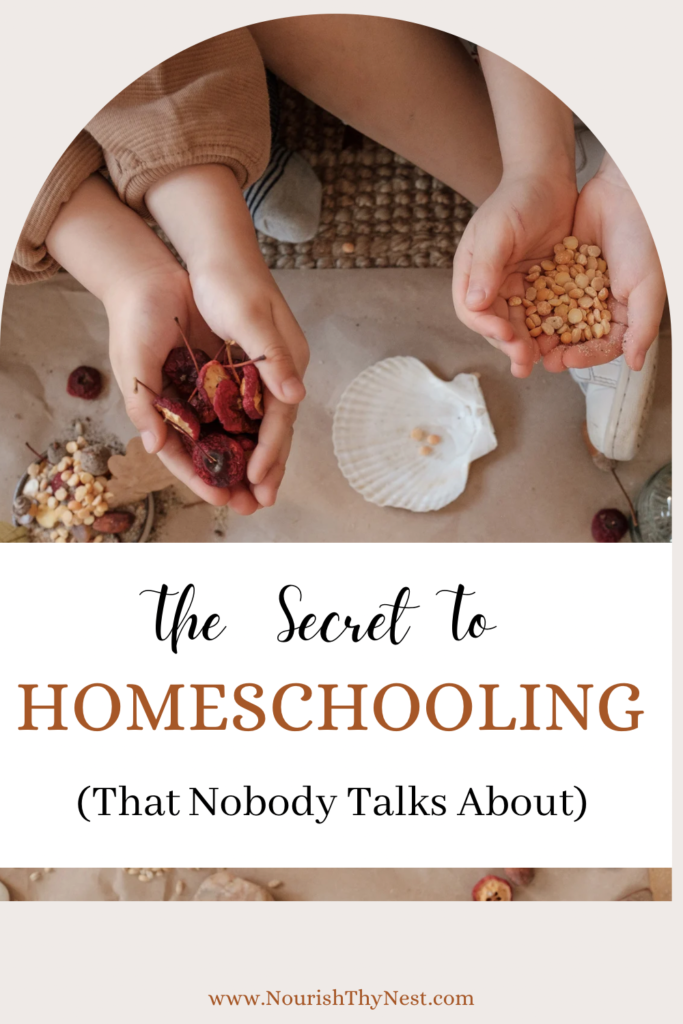
This blog is reader supported, and some of the links in this post are affiliate links, meaning, at no additional cost to you, I will earn a commission if you click through and make a purchase. As an Amazon Associate I earn from qualifying purchases.
When we first began our homeschool journey the key word here was CHALLENGING.
A little history…
Our older child attended public school from kindergarten through second grade, where she grew accustomed to learning being a painful and stressful experience. She was VERY happy to begin homeschooling when we decided to start.
Very happy, and very excited.
Until she found the work to be…well…work.
Once she experienced that her schoolwork at home could also be challenging, she resisted. She did not want to do what I asked of her.
After a little while, it started to become a daily power struggle between us.
And I didn’t know what to do.
This is not what happened.
At least, not after the first week or two when the novelty had worn off.
She didn’t want to go on walks.
She didn’t want to play math games.
She hated audiobooks.
She didn’t want to practice handwriting. Or spelling. (Let alone grammar and punctuation!)
And all that resistance made me panic.
This wasn’t supposed to happen!!!
I researched and researched, and learned that she likely needed some time to “De-School” after being in public school.
Whew, I thought. There is my answer.
So we spent 3 months de-schooling, 1 month for every year of school she attended.
And then we got back to homeschool.
It was a little better. But only a little.
And I was really frustrated and freaking out a bit now.
Over the next year I tried so many things.
Different modalities.
I imposed “consequences” if she didn’t do her schoolwork.
And things just got worse.
For her 5th grade year we decided to try a Waldorf based curriculum.
I was pretty worried because 5th grade is rather late to start with Waldorf, but I was desperate and longing for a peaceful feeling home.
So I dove in, and learned everything I could about Waldorf in the 3 months of our summer break.
One thing that really struck me about Waldorf is the gentleness with which they recommend approaching children, and the detail involved in getting to know your child’s temperament.
And also teaching using the Lively Arts to make the lessons as engaging as possible.
This was the beginning of some change for us. It did improve our homeschool a bit. The lessons were more engaging. But she still resisted anything that she thought was “hard”.
So while it did help, Waldorf wasn’t the secret I needed. There had to be something else!
While I was learning about Waldorf, I also began to learn more about the Peaceful Parenting approach of Dr. Laura Markham.
And this is where I found the number one secret to homeschooling, in one single word: Connection.
Also known as: Connected Parenting , Responsive Parenting, and Peaceful Parenting.

It is through this connection with you, the parent, that they become willing to not only accept the work of homeschooling, but to also delight in it.
But how do you build that connection in the first place?
It involves being present, attuned, and responsive to our children’s needs and emotions, and creating a nurturing and supportive environment that fosters a sense of safety and trust.
Then let them choose whatever they want to play with you, set a timer for 10 minutes (or 15 or 20, whatever works best) and go along with their game, letting them take the lead until the timer signals it is time to stop.
(Read more about these techniques on Dr. Laura’s website, ahaparenting.com)
Not convinced yet? Read on..
- Active listening and validation of our children’s feelings and experiences
- Engaging in positive and supportive interactions with our children.
- Creating safe and nurturing environments that promote healthy emotional development.
- Maintaining consistent and clear boundaries that promote safety and security.
Why is Connected Parenting Important?
Connected Parenting Builds Trust:
Connected Parenting Encourages Open Communication:
Connected Parenting Fosters Emotional Intelligence:
Connected Parenting Builds Resilience:
Connected Parenting creates Attachment and Trust:
Connected Parenting Improves Self-Esteem:
Connected Parenting Improves Behavior:
Connected parenting is the most critical component of being successful at homeschooling your kids.
By building trust, encouraging open communication, fostering emotional intelligence, and building resilience, we can create a positive learning environment that supports our children’s academic journey.
Once I began focusing my attention on building connection with my daughter, everything began to fall into place.
It truly felt like a miracle. And our 5th grade year was beyond a doubt our very best homeschool year for her.
To practice connected parenting, parents should listen actively, acknowledge emotions, and validate feelings.
And check out all of the material on Dr. Laura’s website, read her book Peaceful Parent, Happy Kid, or if able, I highly recommend her parenting e-courses.
(By the way this is not a sponsored post..I’m just a huge fan of Peaceful Parenting, and I am not being compensated by the organization. These are my opinions alone. However if you purchase Dr. Laura’s book by clicking the link here I will earn a very small commission which supports this blog.)
Peaceful, Connected parenting emphasizes the importance of emotional connection and attachment between parent and child.
It can promote healthy emotional development, improve behavior, and enhance self-esteem and self-image.
By being present, attuned, and responsive to our children’s emotional needs, we can help them develop the skills and resilience they need to thrive.
And by building such a strong strong relationship with out children, we can help them succeed in homeschooling and beyond.
